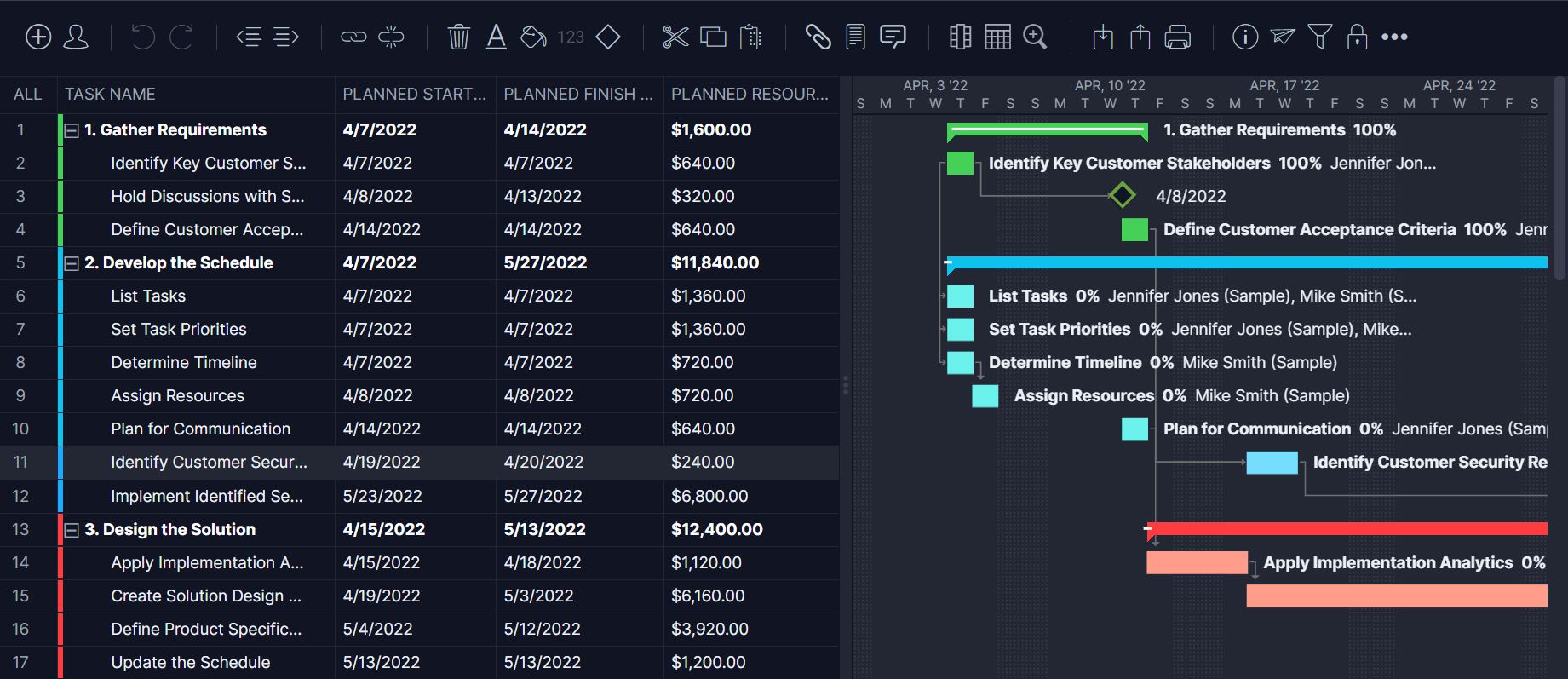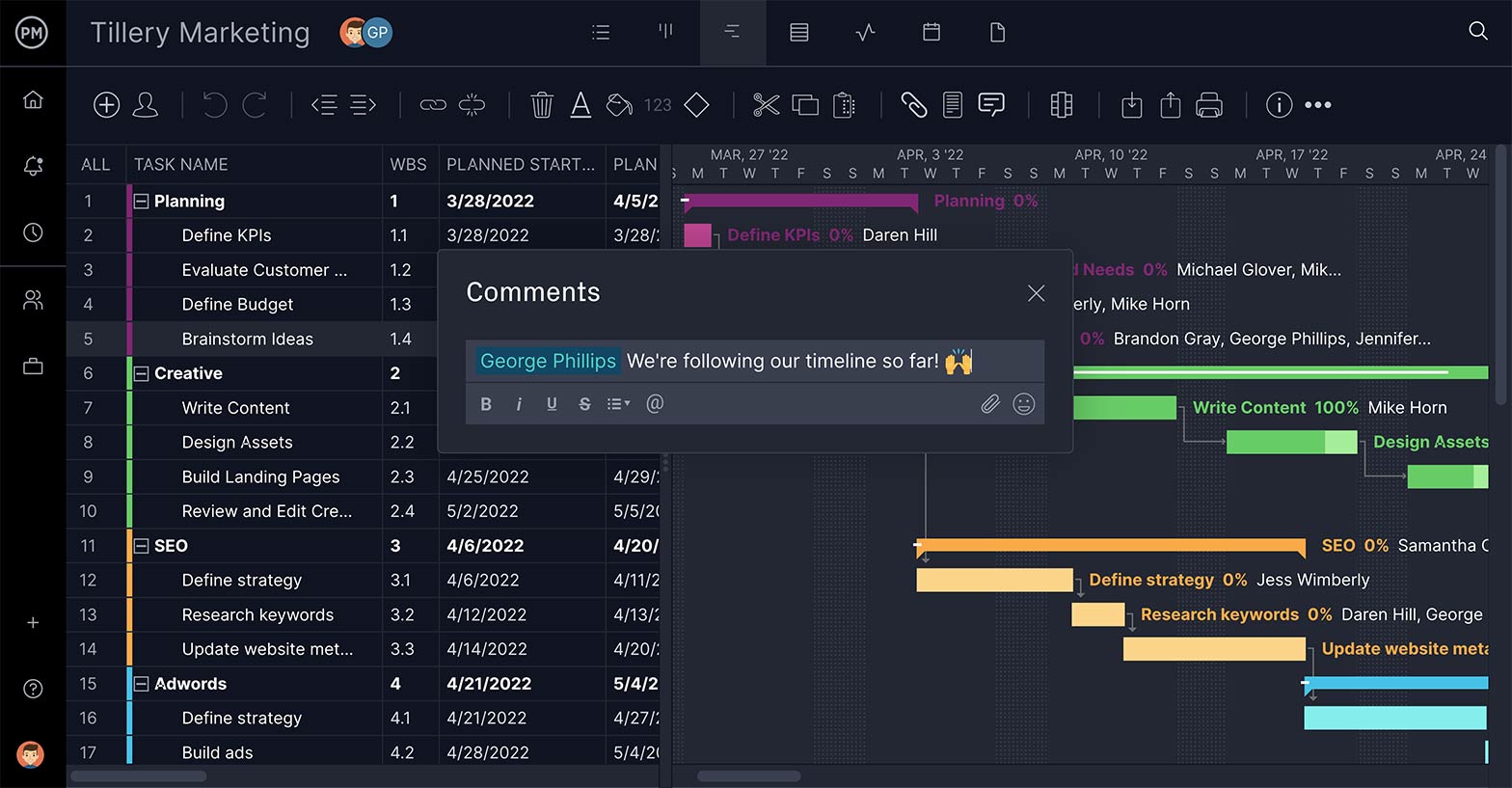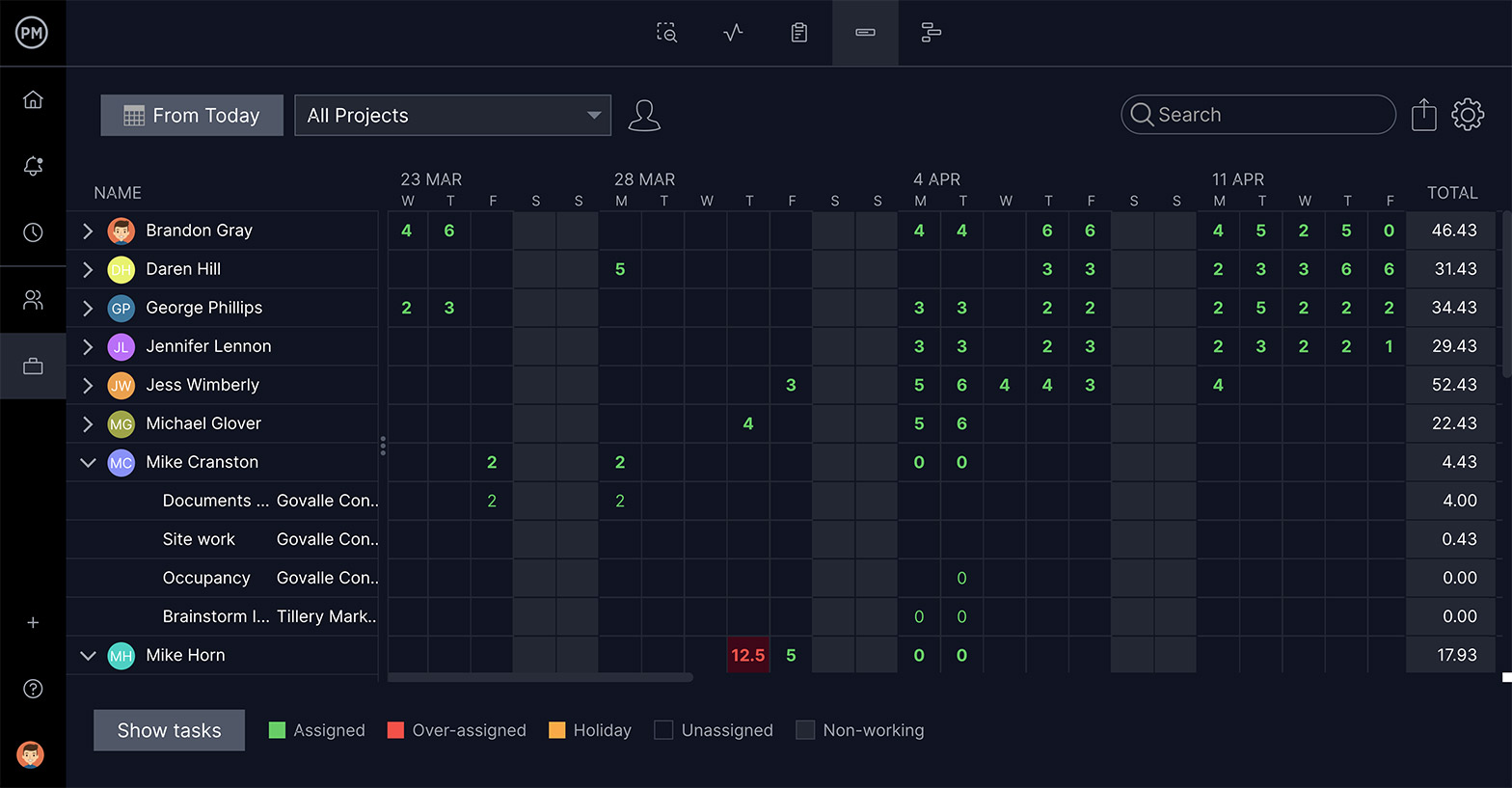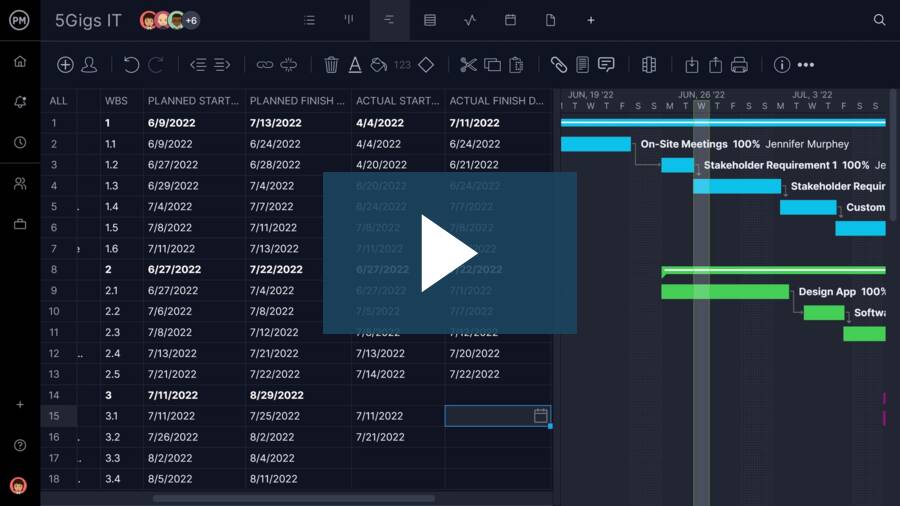Projects require an implementation plan, and that plan requires an implementation schedule. A schedule defines when project phases will start and end. Those dates might change depending on risk and constraints, but without an implementation schedule, things quickly go off track.
Getting your project plan into action requires an implementation schedule. A project implementation schedule takes all your tasks and organizes them into a tactical, actionable schedule. Having a well-thought-out project implementation plan helps bring in your project successfully.
What Is an Implementation Schedule for a Project?
A project implementation schedule is a chart that maps every task required to complete a project, each with a specific deadline. This is a cornerstone of any project plan because you’ll use it during execution to monitor and evaluate the project’s progress.
Begin with a list of all the tasks necessary to reach your final deliverable. This list needs to be thorough, which is why we recommend you use a work breakdown structure (WBS).
On your implementation schedule, you will rank the priority of each task and identify any tasks that have dependencies. Knowing the dependent tasks when creating an implementation schedule is how you can avoid delays later on in the execution phase of the project. The visual representation of a project implementation schedule is usually done on a Gantt chart. Gantt charts can be complicated if there are many tasks associated with the project, but using project management software like ProjectManager makes it easier to use. Your Gantt chart will update automatically as changes occur, and your project implementation schedule can be shared easily with stakeholders.

Why Are Implementation Schedules Important?
Use an implementation schedule to ensure that everyone on the project team stays on track while keeping to the schedule and budget of the project. The groundwork for project success is laid out during the planning phase, when you create the project implementation schedule.
In short, an implementation schedule is how you take an idea and make it a reality. Projects have greater success when they have an implementation schedule.
Implementation Schedule Example
To help you understand what an implementation schedule is, we’ve provided the following example using ProjectManager’s free implementation plan template.

You’ll notice that our implementation schedule example is broken up into project phases. In this Gantt chart, three of those phases are detailed: gather requirements, develop the schedule and design the solution. Under each of these phases are the tasks and subtasks that must be completed in the phase.
For each task, there is a planned start date and a planned finish date. The percentage complete is calculated on the Gantt chart as teams update their status. Priority and milestones are set and task dependencies are linked, in order to avoid bottlenecks from blocked team members.
Tips to Create a Project Implementation Schedule
Projects often fail. You can miss deadlines, go over budget or fail to meet quality expectations. No one wants a project to deliver anything less than success, and to do so, you need to have a project implementation schedule. Here are some tips on how to make one:
- Start by defining what project success is: Communicate what project success is and make sure everyone involved in the project is aware of how it is defined. This helps the team know what’s in scope and what’s not. Having a shared vision creates unity and that’s the definition of a team.
- Define the structure of the project: Define the roles and responsibilities of the team members working on your project. Implementation is a team effort, and your team needs to know what they are doing—and where their authority starts and ends. The clearer you are, the better the project implementation plan.
- Communicate well: A project implementation schedule lives or dies on how well you communicate. Team communication is not a one-way street. While a project manager should direct their team, a project manager should also be open to feedback. Your team is your best resource.
- Keep resources in mind: We’ve already mentioned how important it is to identify task dependencies to keep things running smoothly. But it’s equally critical that you know the resources needed to execute tasks and ensure they’re available when you need them.
- Know who does what: While we mentioned having roles and responsibilities of the project team defined, it’s also important to know the hierarchical structure of the project’s chain of command. That is, who has governance over certain aspects of the project? Know who the decision-makers are, who signs off on what deliverables, etc.
- Be flexible: Implementation schedules are a balance between scope and timeline. As things change, you need to be flexible. Compromise is important, as is being able to see what must be done and what can be put aside. That involves calculating the critical path of your implementation schedule. It can be a complex equation, but it’s worth the effort.
Related: Project Scheduling Templates
How ProjectManager Helps with Implementation Schedules
ProjectManager is cloud-based project management software that organizes tasks, connects teams and provides real-time data on your projects. Making an implementation schedule is part of any project plan, and ProjectManager helps you plan, track and report on progress and performance. See how to create a schedule on our tool by watching this short tutorial video.
Create a Schedule on a Gantt Chart
ProjectManager’s online Gantt chart helps you prioritize, link dependencies and set milestones. We also make it easy for you to find the critical path of your project implementation plan. Then, set a schedule baseline, which lets you compare planned effort to actual effort so you can see if you’re on track.
Communicate Easily with Your Team
ProjectManager fosters team collaboration and keeps the lines of communication open. Team members can log on, whether they’re in the office or remote, and can comment and add files to tasks. Changes to task status trigger automatic email and in-app notifications to keep everyone on the same page.

Monitor and Report on Progress to Stakeholders
Monitoring progress is crucial to keeping to your implementation schedule. You can get a high-level view with the live dashboard. while one-click reports can be shared with stakeholders. Resource management tools, such as the workload chart, help you make sure your team’s workload is balanced to keep them productive.

ProjectManager is award-winning software that helps project managers, teams and stakeholders stay informed. Manage your project with features that help with plans, resources, timesheets and more. Join the tens of thousands of teams at organizations as varied as NASA and Ralph Lauren who use our software to manage their projects. Try ProjectManager today for free.


